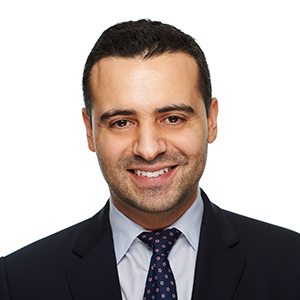In a world faced with tremendous macro and geopolitical uncertainty amidst rapidly changing financial conditions, the temptation is to fall back on what has worked in the past. Yet, as we discussed in some detail in our 2022 Outlook, we believe that we are entering a new environment for investing, an environment where structural forces – in particular the changing structural relationship between stocks and bonds – demand a new approach to portfolio construction. Key to our thinking is not only are forward returns likely to be lower for risk assets such as Public Equities, but also traditional Fixed Income may no longer serve as a shock absorber, or diversifier, when paired with other asset classes in a diversified portfolio. Against this more challenging backdrop, however, we still believe that there are compelling opportunities to build upon a traditional ‘60/40’ portfolio to deliver attractive risk-adjusted-returns in the environment we envision. Specifically, we think that adding asset classes such as Private Real Estate and Private Infrastructure can enhance the Equity part of the ‘60’ portfolio, while Private Credit can bolster the ‘40’ segment of the Fixed Income portfolio. At the same time, we also think that the increasing democratization of alternative asset classes is creating a compelling opportunity for all investors to harness the illiquidity premium in a potentially more thoughtful way.
The present is the ever moving shadow that divides yesterday from tomorrow. In that lies hope.
In today’s world of heightened uncertainty in the global capital markets, the natural inclination for an asset allocator might be to go back to what has worked or seemed ‘safe’ in the past. To many investors, the ‘safe’ impulse would definitely be to migrate existing portfolios to the traditional ‘60/40’ mix of assets, which comprises 60% Equities and 40% Bonds. As Exhibit 1 shows, the ‘60/40’ has delivered not only solid absolute performance in the past, but has also done so with a much better return/risk ratio than either asset class in isolation. All told, through December 31, 2021, the 3- and 10-year annualized returns of the ‘60/40’ portfolio have been 17.5%, and 11.1%, respectively. The risk-adjusted returns (or Sharpe ratios) of this simple allocation have reached impressive levels of 1.67x over the last three years and 1.41x over the last 10 years. This risk-adjusted performance has been materially ahead of the individual asset classes that compose the benchmark. It has also bested the performance of many CIOs who have tried to diversify away from the benchmark by seeking sources of alpha.
EXHIBIT 1
Is the Golden Age of the ‘60/40’ Portfolio Over?
Why has this outperformance happened? In theory, the equities component of the benchmark aims at delivering capital appreciation in line with the growth of the overall economy, while the purpose of the bond component is to provide income and act as a stabilizer, or shock absorber, in times of market or economic stress. Also, it has performed better in recent years than other more diversified portfolios that both institutional and individual investors have embraced because stocks and bonds have been negatively correlated.
Whether or not one subscribes to the ‘60/40’ portfolio theory, this benchmark has become a de facto measurement tool for most CIOs. Indeed, most of the CIOs with whom we speak across major pools of liquidity, including pensions, endowments, insurance companies, and increasingly individual investors, use the ‘60/40’ (or a ‘70/30’) as a form of benchmark to measure whether their asset allocation, manager selection, and/or security selection preferences are adding value to the overall process. Not surprisingly, this form of ‘score keeping’ has become an important part of how CIOs and their investment teams are compensated over time.
EXHIBIT 2
A Regime Change Is Occurring
Importantly, however, as we look ahead, all our macro and portfolio construction work at KKR suggests that we are entering a new environment for investing. Specifically, we are now seeing rising interest rates, higher levels of inflation, and heightened geopolitical risks against a backdrop of slower real economic growth. As such, we have spent time analyzing whether past performance is a prologue for future performance. Our bottom line, similar to what we laid out in our 2022 Outlook (see A Different Kind of Recovery), is that this time is different. As such, we firmly believe that we have entered a regime change, where structural forces now warrant a different approach to portfolio construction, including a re-examination of the merits of the ‘60/40’ allocation. Key to our thinking, as we discuss below in more detail, is that the structural relationship between stocks and bonds, particularly during volatile markets, is changing. In particular, we believe that not only are forward returns likely to be lower but also that Bonds can no longer serve as shock absorbers or diversifiers when paired with Equities (Exhibit 3).
Given this view, we think that investors may need to add different types of investments to their ‘60/40’ mix to protect their purchasing power in this new environment we envision. At KKR, we traffic mainly in private investments. As such, we have created some alternative asset allocation strategies, described below in greater detail, that we believe can be value-added to ‘60/40’ portfolios, especially if we are right about the correlation between stocks and bonds breaking down. If there is good news, our research shows that there are opportunities to add value on both the Equity and Bond sides of the ‘60/40’mix. Our bottom line: It is not business as usual in the investment management business and now is the time for all investors to revisit their asset allocation game plan on a prospective basis.
EXHIBIT 3
The Relationship Between Stocks and Bonds Is Changing in This Inflationary Environment
Portfolio Construction Shifts for the New Investing Regime
So, as we described above, without question, the 2010s were a golden decade for the ‘60/40’ investor. In particular, the stars were perfectly aligned for the ‘60/40’ allocation to perform strongly after the Great Financial Crisis of 2008. Stocks rose and rates fell; thus bond prices rose and the stock-bond correlation was muted.
However, we believe each of these premises will be at risk in the next decade and are now beginning to turn. Let’s start with stocks.
DISCLAIMER




Share on